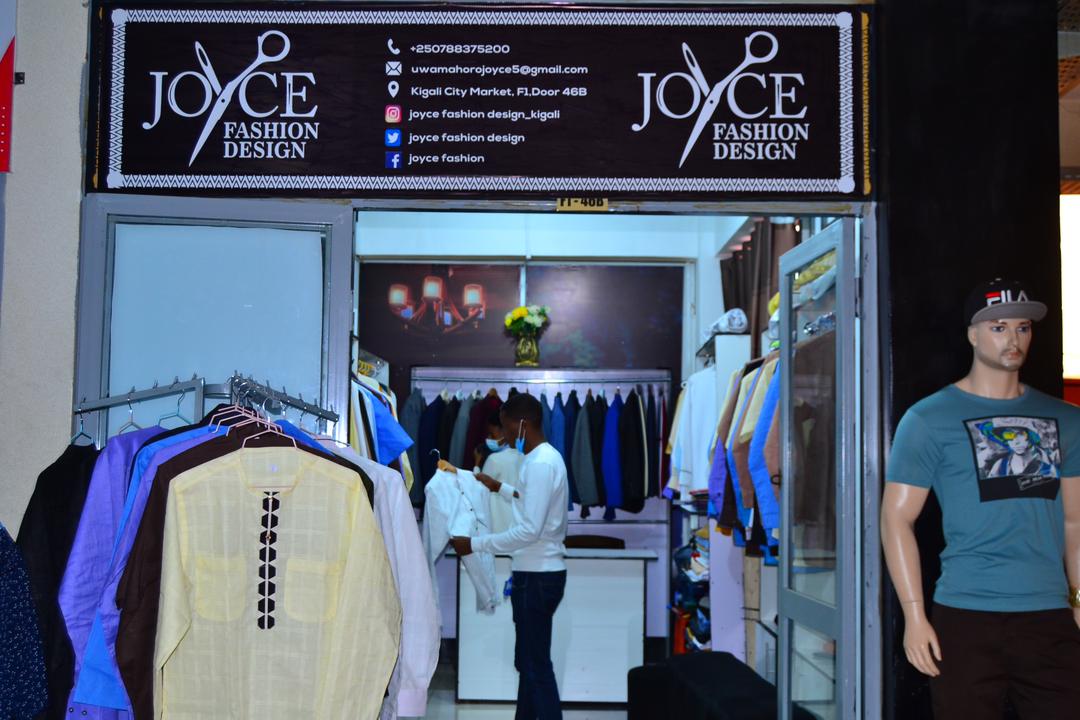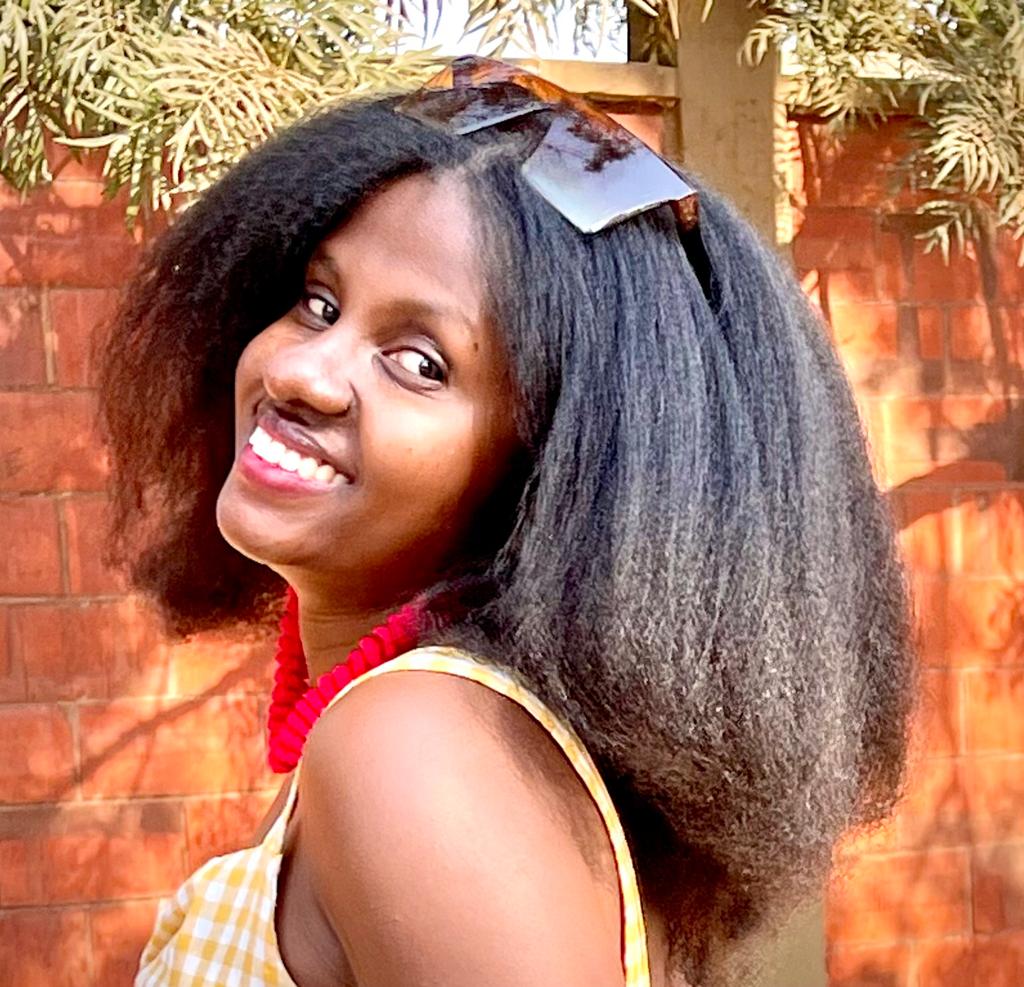

While still pursuing a Bachelor’s degree in accounting, Joyce Uwamahoro yearned to start a business but couldn’t put a finger on what to do exactly, given she also had no capital. But, she says, she had a sense for fashion, and longed to be one of the leading brands taking Made-in-Rwanda products to higher levels.
Occasionally, she would check out local and international designers’ work and realised that fashion will never be out-dated, and this motivated her to give it a shot. Her strong support system of friends and family also pushed her beyond her fears and uncertainties.
However, Uwamahoro had no skills in sewing, but that didn’t deter her—she turned to YouTube tutorials. In about two months or so, she had the necessary expertise. However, since she didn’t have capital, she had no access to the equipment needed or space to rent.


She approached a tailor in Kigali City Market and asked to use his sewing machine for a commission of about 20 to 30 per cent for every client she received, to which he agreed.
Uwamahoro says she would post some of the outfits she made on social media, mostly Instagram and WhatsApp status, and would receive feedback from friends and followers— unware that she had no specific location.
"Whenever a client ordered one of my designs, I would ask for an advance payment, which helped me buy the material. I made the measurements from their homes, offices or wherever they were, but I couldn’t disclose that I didn’t have a shop. Some of them even insisted that they would come to pick their clothes after completion, but I assured them that I would find them in the comfort of their homes,” she says.
The fashion designer adds that with time, some of her clients got fed up with her excuses as they wanted to know where her fashion house was located. They had started to think that she was probably a commissioner, and stopped supporting her business.
With all this going on, she still worked on her marketing strategies and asked friends to advertise her designs on their social media platforms.
She says that she would save about Rwf 100,000 to Rwf 170,000 per month, and in about eight months she was able to open shop, then launched her fashion house—Joyce Fashion Design—in 2018.
The fashion enthusiast says that in a few months of operating, diverse media houses reached out to her for interviews, which got her even more clients.
"I had started getting popular and would dress models and TV presenters who promoted my work as well,” she says.
In 2020, Uwamahoro stopped borrowing sewing machines from tailors and purchased six new ones of her own, she also employed eight workers to meet the increasing customers’ demands. She now exports to the US, DRC, Australia, Europe, Nigeria, and Kenya.
She adds that in order to attract more clients, she sells her apparel at relatively cheaper prices, as compared to other fashion designers. Uwamahoro is also glad that Rwandans are starting to embrace local brands, unlike before when they preferred imported clothes.
Her business encounters problems such as duplication of her designs by new fashion designers. To her, such people lack creativity and since they want to be known fast, they duplicate other people’s designs, a thing she finds unprofessional.
"Some people don’t buy Made-in-Rwanda clothes as they are expensive considering the costly materials we use that are imported from Europe, Australia, and Canada. Although clients abroad demand Rwandan-made outfits, some of them want to first trust the fabric before buying them, a thing that is hard to do. We call upon the government to facilitate traders to partake in international expos. That way, we can showcase our products,” the fashionista says.
Uwamahoro looks forward to opening more branches in and outside Rwanda, and attracting more Rwandans to support their local brands by offering them discounts.
The stylist says that outrivalling in the fashion business requires equipping oneself with skills, such as; staying one step ahead of the competition, for instance, making sure that one’s apparel is unique and distinctive, otherwise if it’s common and obvious, clients won’t buy it.
"To be successful in the fashion business, you must be a great team player, by cooperating with your team and agreeing on what marketing tactics will work for the company better,” she says, adding that sometimes all it takes is playing with colour just to create a difference.
She also notes that moving forward in the fashion business requires a designer to have an eye for the latest trends, as that’s how they can thrive because people like what is trending.
The stylist is of the view that if fashion is what interests you, don’t just jump into starting a business in that domain before conducting market research. She says to find out whether the kind of designs you want to exhibit will be in demand by your target audience, but also remember to assess your skills and measure exactly which area of fashion design you are best suited for.


